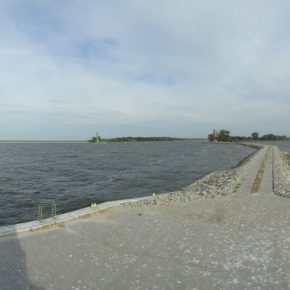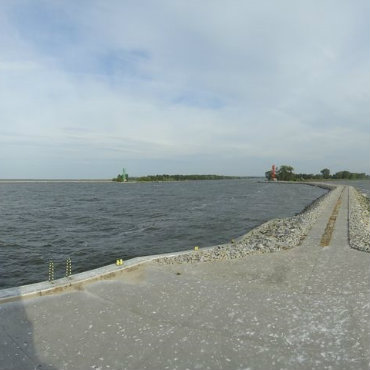Tydzień w gospodarce
Category: Trendy gospodarcze

Świnoujście, Poland (Adam Piotrowski, CC BY-NC)
The tunnel, costing an estimated PLN950m (EUR220m) will have 85 per cent of the costs financed by the EU Operational Fund for Infrastructure and Environment. The rest will be covered by the municipal budget. The tunnel will link the islands of Wolin and Uznam, two of the main islands in the estuary. The city is located in the north-west of the country and on the estuary of the river Świn.
Part of the city also lies on a third island, Karsibór, and there are forty more, mainly uninhabited. Świnoujście is a popular summer holiday resort. Its 40,000 inhabitants cannot cope with the number of cars and visitors each year and local ferries are struggling to manage the traffic.
The mayor of Świnoujście, Janusz Żmurkiewicz, stated that the town had been waiting seventy years for such a project. The tunnel itself will be 1.4 km long and the entire project will run for 3.4 km. The bore itself will be 12 meters in diameter with two lanes for road traffic. Environmental concerns have been allayed as the tunnel will be constructed using specialized boring hardware, benign to the environment.
Tenders will start will start mid-2017 at the most optimistic, with work starting sometime in 2019. Estimates for opening and use will are 2021-2022. And for the first five years it will be toll free.
Most of the inhabitants live on the Island of Uznam and there is no link with the mainland, only a twice-daily ferry. In high season, the town is packed with holidaymakers and over 2 million cars were recorded in 2015; the obsolescent ferries taking up to 11,000 vehicles daily.
The tunnel in Świnoujście will no doubt facilitate the north-south traffic between north-western Poland, Germany and further by motorway into the Czech Republic.
There is a strategic rationale at work. The importance the government attaches to the development of inland waterways is shown with the creation of a Ministry of Marine Economy and Inland Navigation whose stated aim is to raise the navigability of the River Oder (on whose estuary Świnoujście lies) to fourth-class and to link the Western Pomeranian voivodship with Lower Silesia, the Danube and the Elbe rivers.
Expert underpinning can be found in the annual Baltic for All report published by the Global Compact network Poland. The main thrust is to promote the development of the Baltic area in energy, fisheries, transport and tourism, while sustainable development is the key phrase there.
As part of “Baltic Program 2015-2020”, the initiative seeks to balance competing aims – ensuring safe transport (totaling 800 million tons of freight a year and 14 million containers), protecting a fragile ecosystem (including disposing of much dumped live ammunition from 1945) and developing energy potential. High on the list, however, is the infrastructure and the development of north-south corridors – Baltic, Adriatic to the Black Sea and Baltic to Adriatic (the Via Carpathia).
Another initiative is the construction of a waterway linking the Vistula Lagoon, and the city of Elbląg, with the Gdansk Bay. The Vistula Lagoon is split between Poland and Russia, with the latter country controlling the only waterway leading to open seas.
Poland wants to cut through the Vistula Spit to build a 5 meter deep 1.3 km long shipping canal. Construction works are to start in 2018 and end in 2022. The cost of the project will be PLN880m (EUR204m) and be financed from the state budget.
This waterway will give access port in Elblag situated some 40 km from the Polish border with the Russian Kaliningrad region.
When the shipping channel is ready, „Elblag will become Poland’s fifth largest sea port after Szczecin, Świnoujście, Gdynia and Gdansk. We will all benefit,” said the deputy Maritime Economy and Inland Waterways Minister Grzegorz Witkowski. The channel is also to raise security in the region and give free water access to smaller ports around the Vistula Lagoon. The minister added that the investment is to generate some 3,000 new jobs.
These two links – the tunnel and the canal – and 22 other Baltic locations earmarked for development, may be small and local in themselves, but are vital links in an ambitious project.



